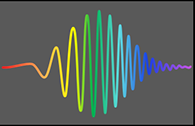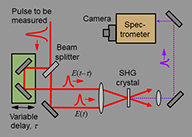Tutorials
Before you commit the money to buy (or the time to build) a pulse-measurement device, we recommend that you take a look at these tutorials, which will give you an idea of what's involved in measuring an ultrashort laser pulse.
Invented in the 1960s, intensity autocorrelation was the first pulse-measurement technique. It uses the pulse to measure itself, splitting it in two, variably delaying one with respect to the other, and overlapping them in some rapidly responding nonlinear-optical medium. Unfortunately, it yields only a blurry black and white image of the pulse intensity and no information about the phase. Nevertheless, it's important to understand it because FROG and GRENOUILLE are simply spectrally resolved autocorrelations—a seemingly minor variation, but, it turns out, a major improvement.
The pulse phase yields the pulse's color vs. time, which is half of the information contained in the pulse. It tells us how to shorten the pulse if it's too long. It also provides important information about the processes that made the pulse to begin with. Also, with this additional information about the pulse, combined with FROG's and GRENOUILLE's over-determination of the pulse, we can know if our pulses are stable (when the measured and retrieved FROG or GRENOUILLE traces agree). This is important because most pulse trains aren't perfectly stable, and there's currently no other simple way to know this.
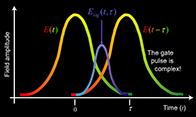
Frequency-resolved-optical-gating (FROG) is the only reliable technique for completely characterizing an ultrashort laser pulse in time. Since its introduction in 1991, FROG has evolved into a marvelously general and powerful technique for measuring ultrashort laser pulses. Instead of measuring an autocorrelator signal energy vs. delay, which yields a simple autocorrelation, FROG involves measuring the signal spectrum vs. delay. This extra dimension is the key to measuring pulses completely and without the need for assumptions. This tutorial introduces the FROG technique and its capabilities.
A simplified elegant FROG device, GRENOUILLE combines the full-information pulse measurement capability of FROG with extreme experimental simplicity. GRENOUILLE operates alignment-free, requires only a few simple optical elements, and naturally operates single-shot. This tutorial introduces GRENOUILLE, teaches its operating principles, and shows why it is a superior technique for measuring ultrashort laser pulses. It also describes its unique ability to measure the elusive spatio-temporal distortions—like spatial chirp and pulse-front tilt—deleterious distortions common to ultrafast lasers.

Ultrashort laser pulses lead difficult lives. They’re routinely dispersed, stretched, amplified, and eventually compressed to, we hope, their shortest possible width. Whether the source is an oscillator, a regen, or a high-power amplifier, ultrashort pulses undergo massive manipulations in order to become so short. But at what price? Possible spatio-temporal distortions, like angular dispersion and pulse-front tilt. This tutorial present these and other typically encountered pulse distortions and the importance of accurate observation and characterization.
Researchers in the 1960s often mistook a narrow spike in their autocorrelations, called the "coherent artifact," for the measure of their pulse length, but its width actually only yields the shortest component of the pulse, not the true pulse length. This misinterpretation continues today, as most new measurement techniques yield only the coherent artifact, and not the pulse, but this is not well known. This astounding case of self-deception (this is the second time it has happened!) continues, but you can help educate the community to help improve ultrafast measurements. Read our tutorial.
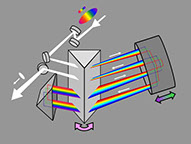
Pulse compression is not only almost always an alignment-intensive task, but it can also introduce problematic spatio-temporal distortions into your pulse, which limit the intensity your pulse can achieve, especially at a focus. But Swamp Optics' award-winning single-prism pulse compressor solves all of these problems--it is physically incapable of distorting your pulse! In addition, it is a compact, alignment-free, easy-to-work-with device that is also inexpensive—about half the price of other commercially available pulse compressors. And while two-prism pulse compressors must be re-aligned when the beam from the laser changes direction slightly, Swamp Optics' single-prism design does not. Simplicity at its best!
The original FROG device involved scanning the delay between two pulses. This meant clumsy translation stages, moving parts, and the need to re-align the device every time it was bumped, moved, or even allowed to remain in place for more than a few hours or days. Worse, it tends to be sold as an all-purpose measurement device, but it actually costs much money, involves significant re-alignment, and requires replacement of almost all optics to extend to another wavelength range. You might as well build your own FROG to begin with. Some companies still sell this device, but it's almost as obsolete as the autocorrelator.
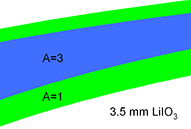
While all optical devices have wavelength-dependent specs to some extent, GRENOUILLE does so a bit more. This tutorial explains why and what you need to know about this effect to use a GRENOUILLE at different wavelengths. To summarize, for longer wavelengths, GRENOUILLE measures shorter pulses. This is because GRENOUILLE takes advantage of dispersion in nonlinear-optical crystals for its spectral resolution, and crystal dispersion decreases as the light wavelength moves from the visible to the infrared.
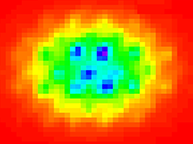
Spatial Profile Effects in GRENOUILLE
Initially, due to its single-shot beam geometry, which uses the transverse spatial coordinate for delay, it seemed that GRENOUILLE could only measure a pulse with a perfect spatial profile; otherwise an inaccurate measurement of the pulse would result. But GRENOUILLE's use of a thick SHG crystal actually is an interesting feature never before encountered in pulse measurement. And more interestingly, this feature actually almost completely removes the beam-profile requirement. The power of the FROG algorithm also helps to make this happen. Read this tutorial to see why.
There's much more information available on ultrashort-laser-pulse measurement on Prof. Trebino's Georgia Tech group web site.
Click here for entire courses on Optics, Ultrafast Optics, Nonlinear Optics, and Modern Physics. The latter two are also fully narrated!
Frequency-Resolved Optical Gating: The Measurement of Ultrashort Laser Pulses, by Swamp Optics' own Rick Trebino
The only book ever written on the subject of pulse measurement!
Available for purchase from Amazon.com and any technical book store.
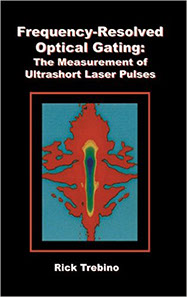
Copyright © 2022 Swamp Optics, LLC. All Rights Reserved.




